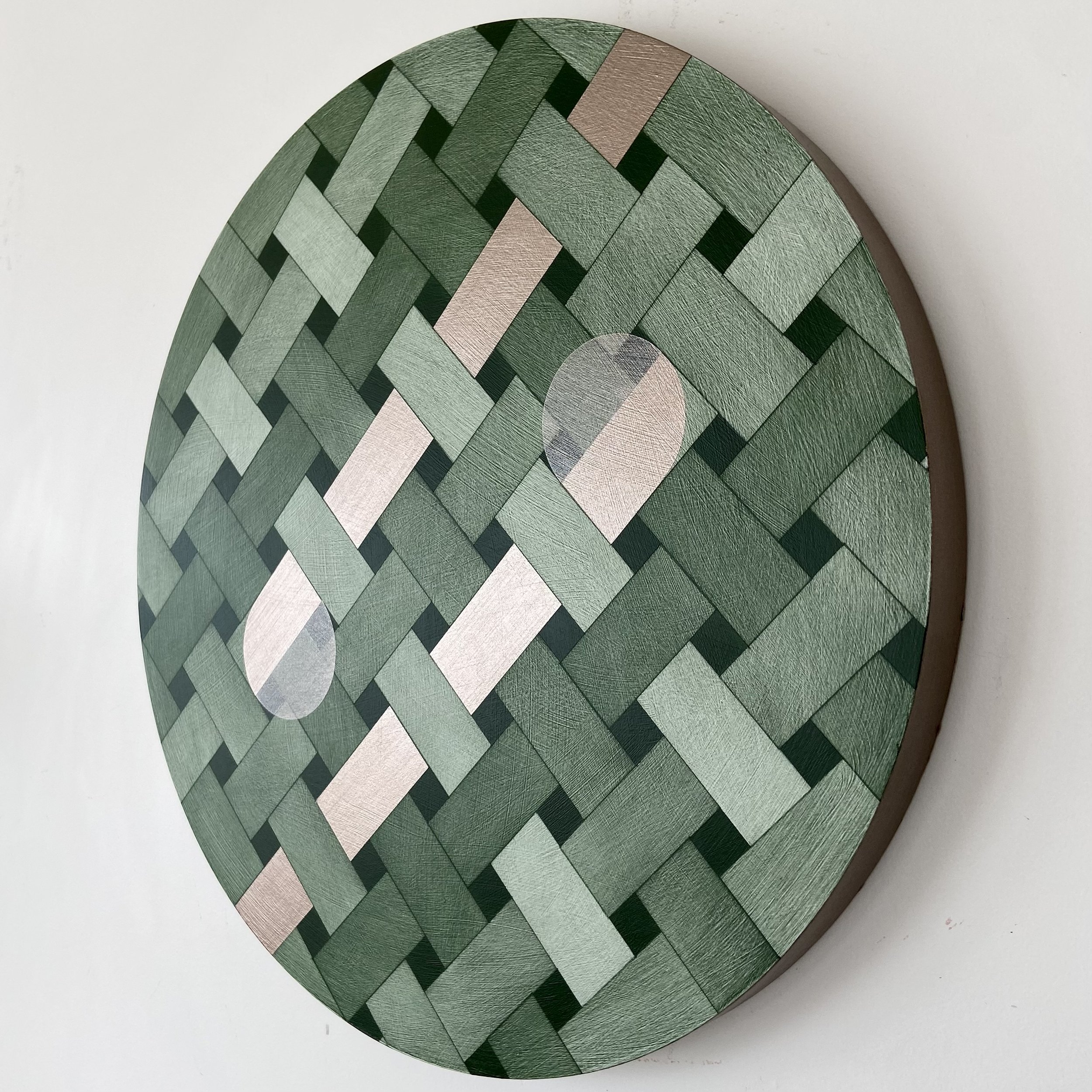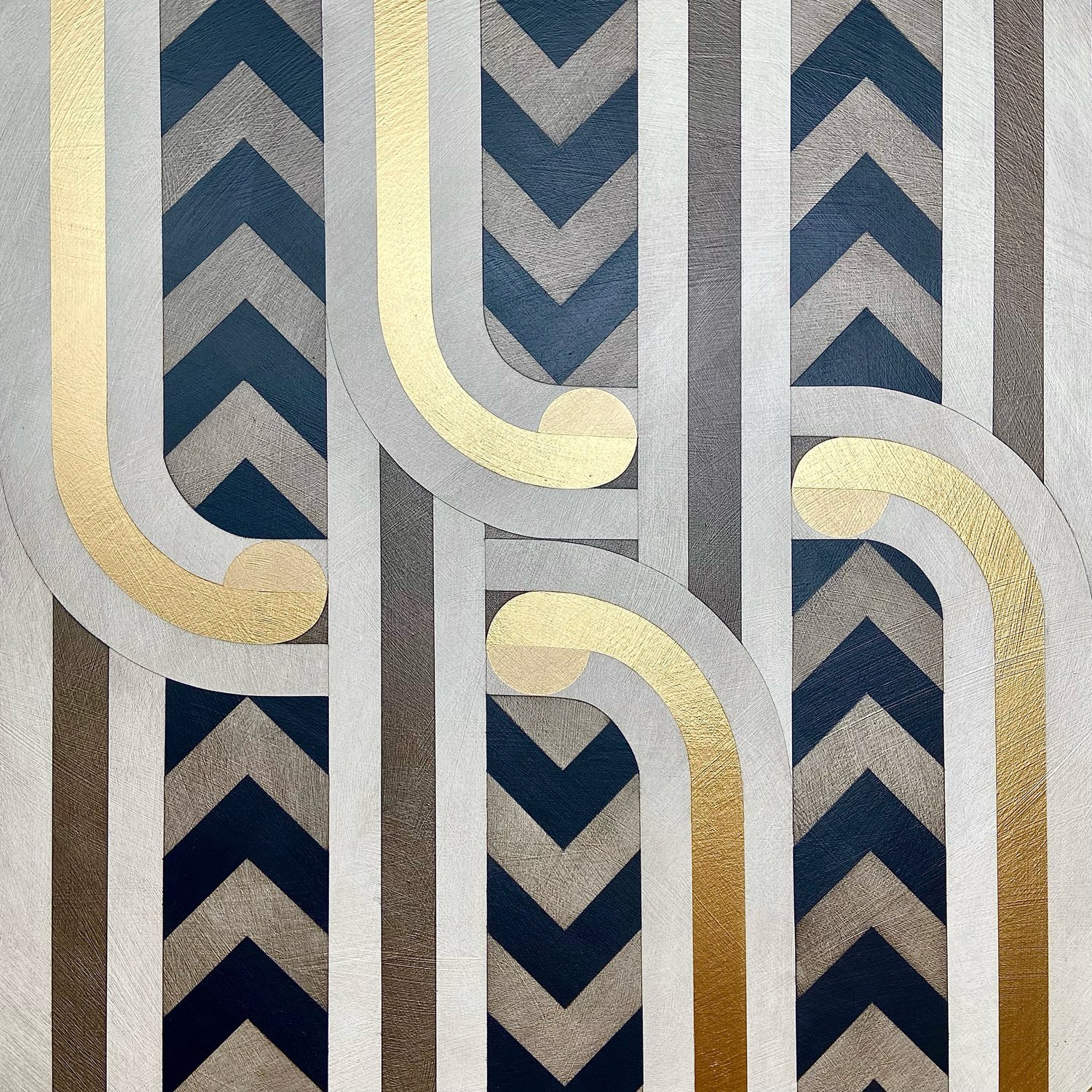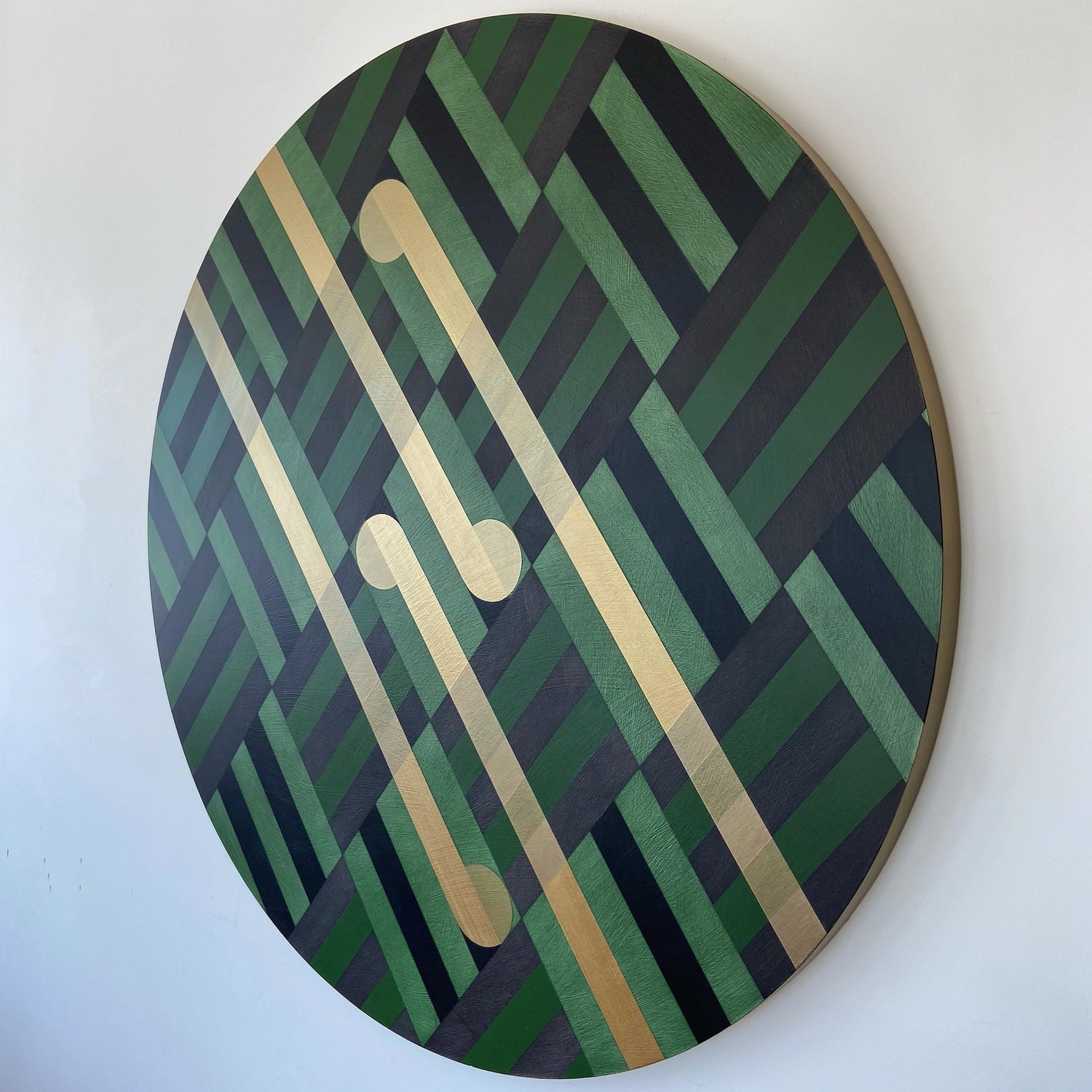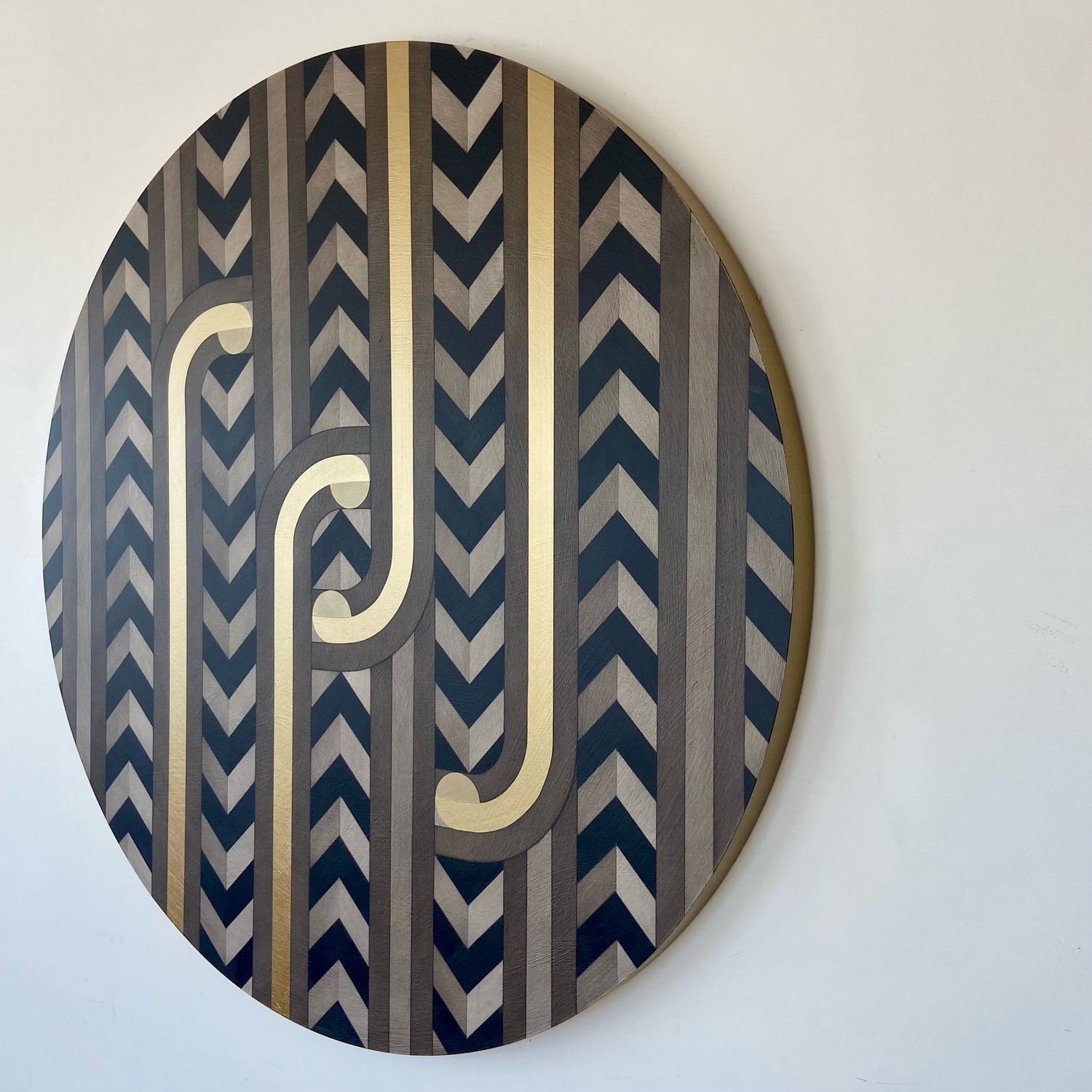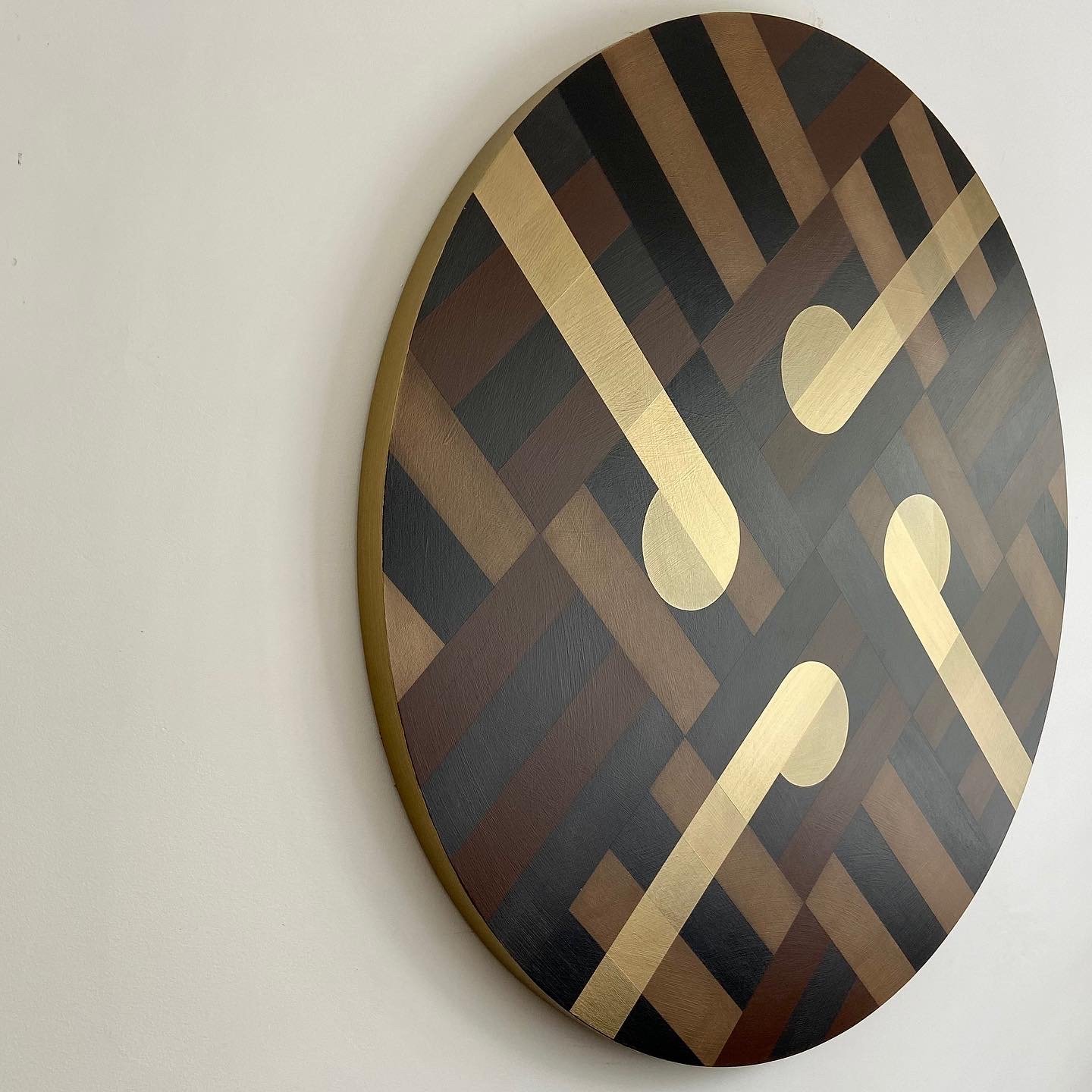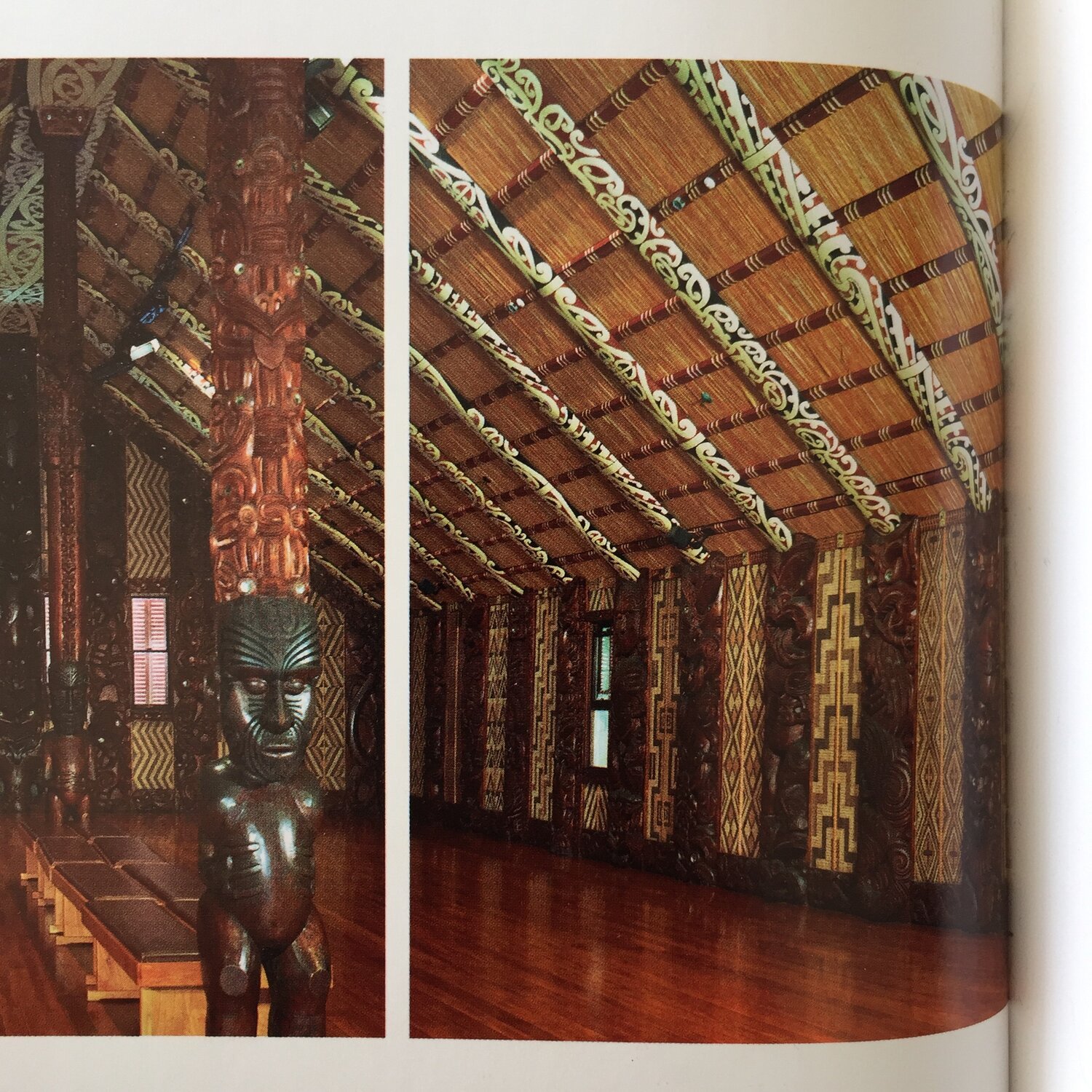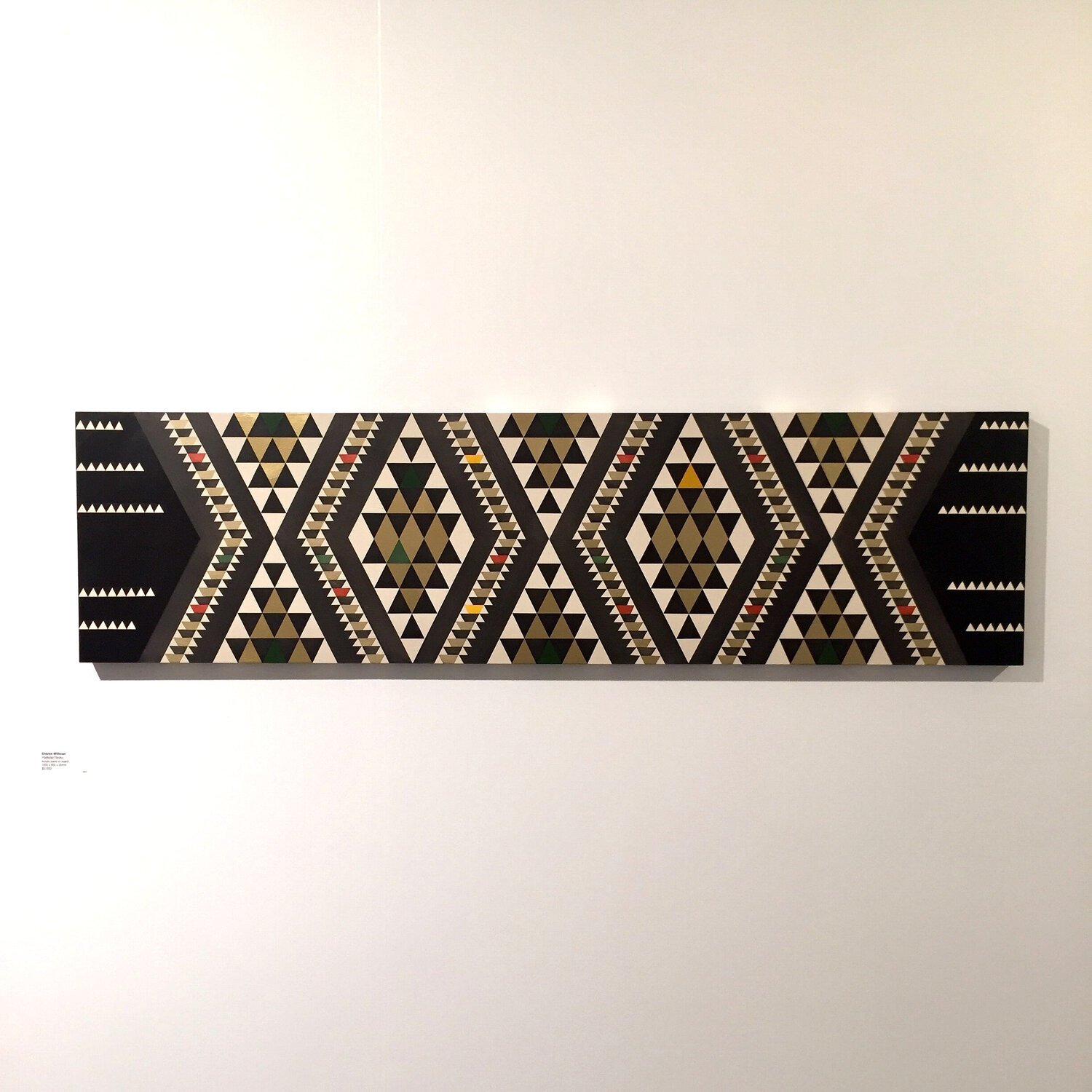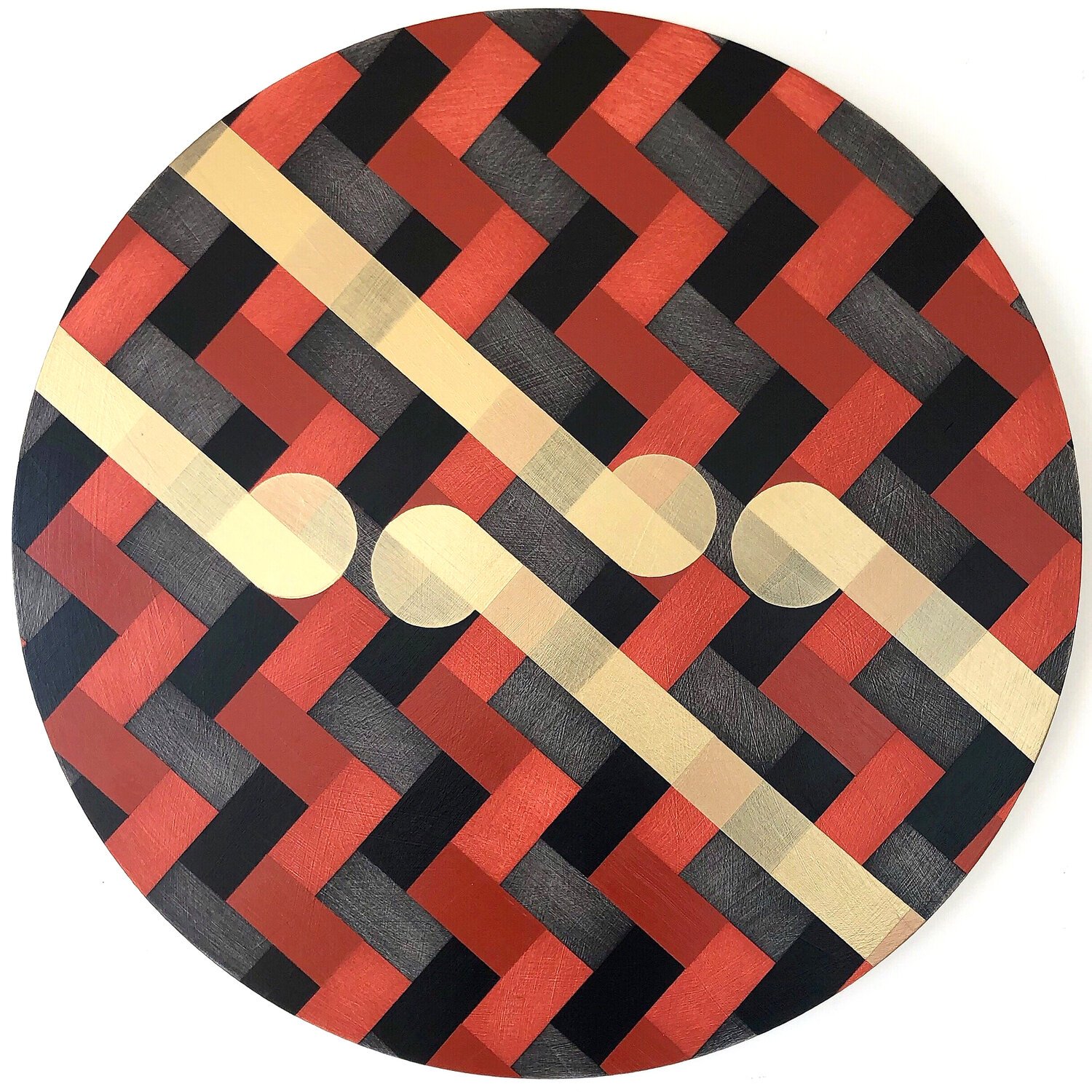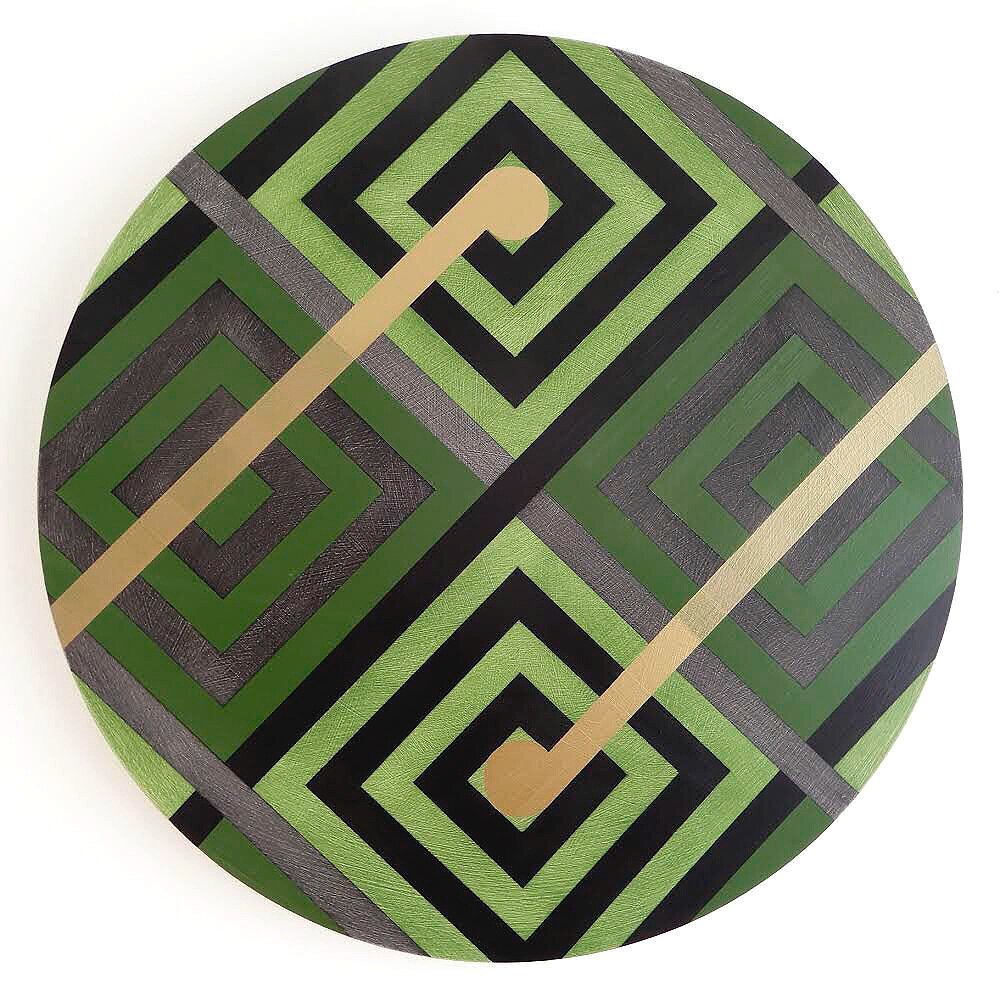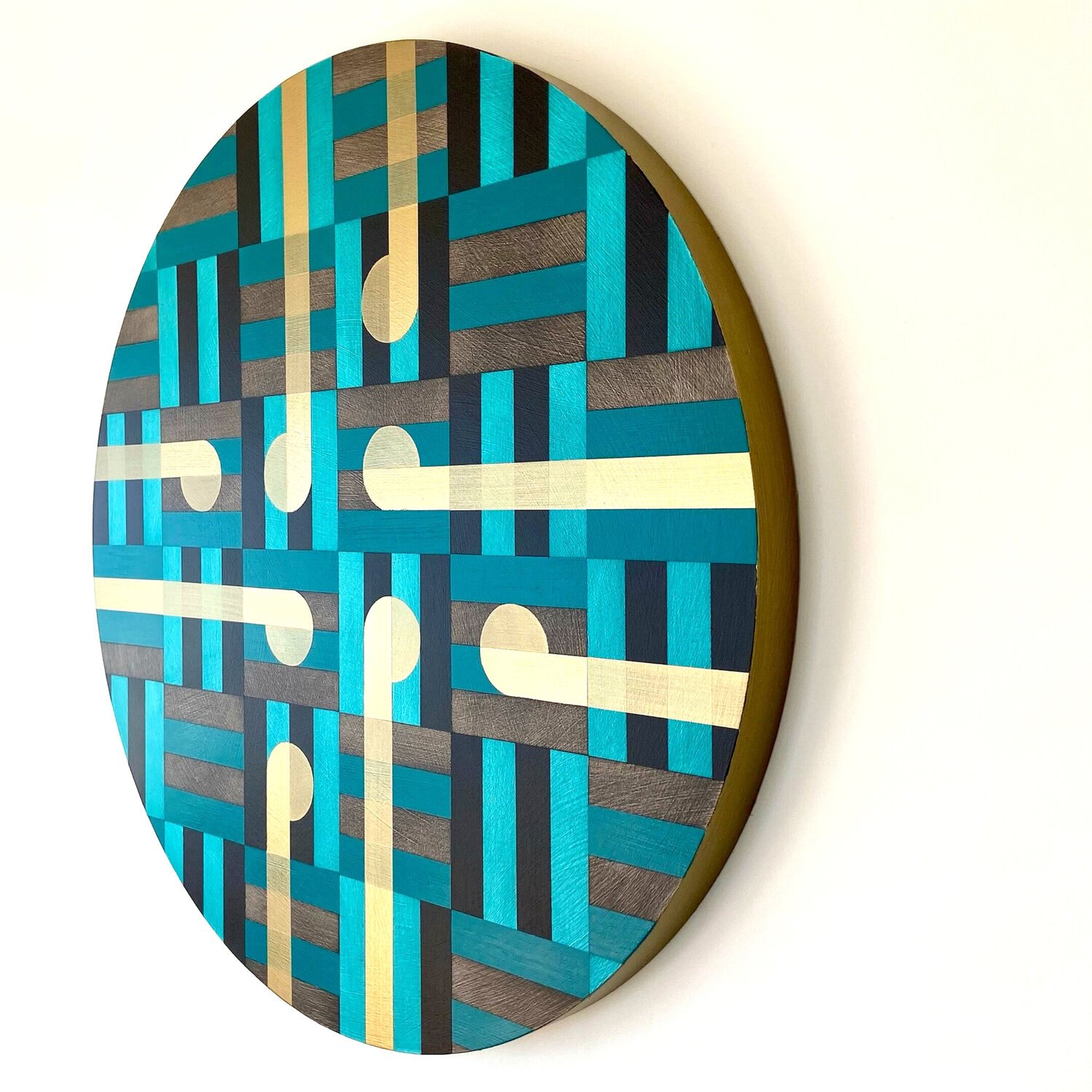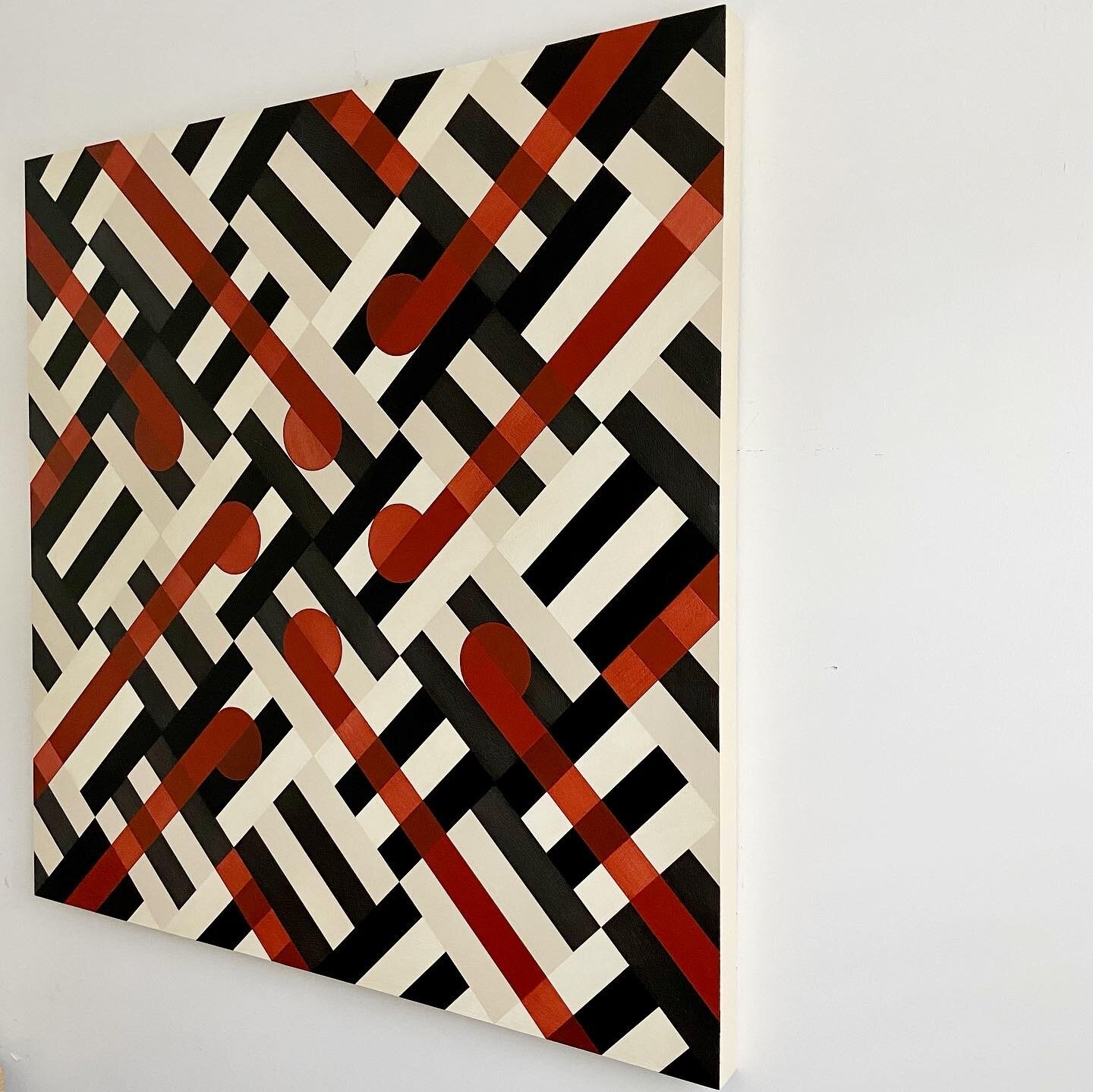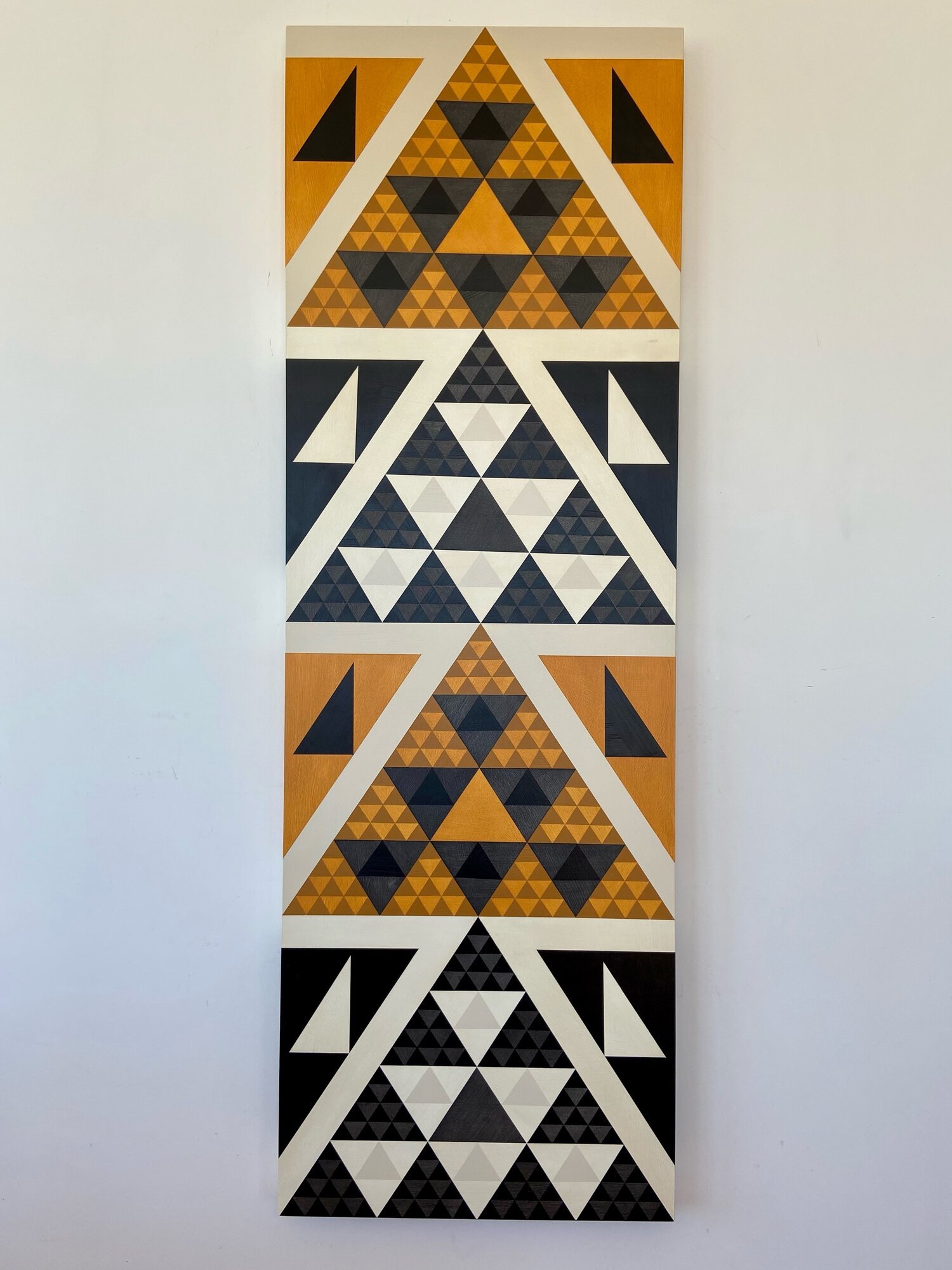Archive
HiKoru (SOLD)
Acrylic on board
300 Ø x 34mm
KeteKoru (SOLD)
Acrylic on board
500 Ø x 34mm
WhenuaPātikiKeteKoru (SOLD)
Acrylic on board
1000 Ø x 34mm
WhakarareToiWhakairoKoru (SOLD)
Acrylic on board
800 Ø x 34mm
With it being the start of a new year I wanted to try something different, I’ve always wanted to try painting from toi whakairo (carving) patterns. I chose the wakarare pattern, seen in second pic. I wanted to incorporate koru and this is what was inspired.
PātikiTukutukuKoru (SOLD)
Acrylic on board
1000 Ø x 34mm
RaupongaToiWhakairoKoru (SOLD)
Acrylic on board
900 Ø x 34mm
ToiKeteKoru (SOLD)
Acrylic on board
1000 Ø x 34mm
Inspired by Kete bag weave pattern.
PutiputiKeteWhakairo (SOLD)
Acrylic on board
500 Ø x 34mm
This is the very first putiputi (flower) kete bag pattern I’ve painted… won’t be the last.
PātikiTukutukuKoru (SOLD)
Acrylic on board
500 Ø x 34mm
This was inspired from a tukutuku panel that adorns the wharenui.
WhakairoKeteKoru (SOLD)
Acrylic on board
1000 Ø x 34mm
PātikiTukutukuKoru (SOLD)
Acrylic on board
900 Ø x 34mm
KaruHāpuku (SOLD)
Acrylic on board
1000 x 1000 x 34mm
TouruaWhakatutuKoru (SOLD)
Acrylic on board
1100 Ø x 34mm
WhenuaKeteKoru (SOLD)
Acrylic on board
1000mm Ø x 34mm
PounamuKeteKoru (SOLD)
Acrylic on board
800mm Ø x 35mm
PurapuraWhetuMātariki (SOLD)
Acrylic on board
700mm Ø x 35mm
RoimataKoru (SOLD)
Acrylic on board
600mm Ø x 35mm
WharenuiKeteKoru (SOLD)
Acrylic on board
1000mm Ø x 34mm
RoimataToroaKoru (SOLD)
Acrylic on board
500mm Ø x 34mm
PātikiKapaKoru (SOLD)
Acrylic on board
(True teal colour not photographed)
500mm Ø x 34mm
ItiWahaTāniko (SOLD)
Acrylic on board
400mm Ø x 34mm
Untitled (SOLD)
This was a personalised commission based on the kaokao pattern and my whanau ribs painting I painted in 2018.
Acylic on board
1000mm Ø x 34mm
Aramoana (SOLD)
Acrylic on board
900mm x 250mm x 34mm
AoteaKeteKoru (SOLD)
Acrylic on board
500mm Ø x 34mm
Pic of kete pattern that inspired this design.
KeteWhakairoKoru (SOLD)
Acrylic on board
900mm Ø x 34mm
I’ve used a kete whaikairo pattern from my favourite book - Raranga Whakairo.
RarangaWhakairoKoru (SOLD)
Acrylic on board
1000mm Ø x 34mm
Pic of kete pattern that inspired this design.
KeteWhakairoaKoru (SOLD)
Acrylic on board
700mm Ø x 34mm
KākārikiKeteKoru (SOLD)
Acrylic on board
900mm Ø x 34mm
KeteWhakairoaKoru (SOLD)
Acrylic on board
500mm Ø x 34mm
ToiKeteKoru (SOLD)
Acrylic on board
1000mm Ø x 34mm
Pic of kete pattern that inspired this design.
RarangaWhakairoKeteKoru (SOLD)
Acrylic on board
1000mm x 1000mm x 34mm
KaruHapukuaKete (SOLD)
Acrylic on board
1000 x 1000mm x 34mm
WhenuaPātikiKeteKoru (SOLD)
Acrylic on board
1000mm Ø x 34mm
KonuKuraWaharaTaniko (SOLD)
Acrylic on board
500 Ø x 35mm
Raranga solo exhibition at Pātaka Art + Museum, 18th September - 26 October 2020
ItiWaharuaTāniko (SOLD)
Acrylic on board
400 Ø x 35mm
Raranga solo exhibition at Pātaka Art + Museum, 18th September - 26 October 2020
KonuKuraKeteKoru (SOLD)
Acrylic on board
1000 Ø x 35mm
Raranga solo exhibition at Pātaka Art + Museum, 18th September - 26 October 2020
WautangiXPoutamaTukutuku (SOLD)
Acrylic on board
1500mm x 500mm x 35mm
Poutama (step-like pattern) has both religious and educational meanings. The steps symbolise levels of attainment and advancement. At one time, Poutama was the only pattern used in tukutuku.
I selected some tukutuku patterns that are in the whare whakairo at the Waitangi Grounds for my solo exhibition to paint, this is one of them.
Raranga solo exhibition at Pātaka Art + Museum, 18th September - 26 October 2020
WaharuakōpitoTāniko (SOLD)
Acrylic on board
1500mm x 400mm x 35mm
For part of my solo exhibition I went to Te Papa Museum to research the kākahu (cloaks) and selected 6 tāniko patterns to paint.
Waharua kōpito consists of vertically paired diamond shapes. The literal translation is ‘a point where people or events cross’. The pattern is a reminder that change occurs at such meeting points.
Raranga solo exhibition at Pātaka Art + Museum 18 September - 26 October 2020
AramoanaTāniko (SOLD)
Acrylic on board
1500mm x 400mm x 35mm
For part of my solo exhibition I went to Te Papa Museum to research the kākahu (cloaks) and selected 6 tāniko patterns to paint.
Aramoana means ‘pathway of the sea’. The horizontal zigzags suggest pathways that the ocean and other waterways provide to many destinations.
Raranga solo exhibition at Pātaka Art + Museum 18 September - 26 October 2020
PātikitikiTāniko (SOLD)
Acrylic on board
1500mm x 400mm x 35mm
For part of my solo exhibition I went to Te Papa Museum to research the kākahu (cloaks) and selected 6 tāniko patterns to paint.
Raranga solo exhibition at Pātaka Art + Museum 18 September - 26 October 2020.
kuraKeteKoru (SOLD)
Acrylic on Board
500 Ø x 35mm
(KuraKeteKoru was on show in the TIKA TONU exhibition)
8 August - 1 November 2020, Main Gallery, Hawkes Bay City Art Gallery. Curated by Dr Sandy Adsett
TIKA TONU brings emerging and established contemporary painters and sculptors from the iwi of Ngāti Kahungunu ki Wairoa, ki Heretaunga, ki Wairarapa together in an exhibition of artwork derived from, but beyond the tradition.
TIKA TONU present a new arts face. Māori artists who, while continuing to acknowledge and protect the mana of traditional Marae arts, are also voicing through their art the issues and challenges facing our cultural beliefs and identity as the Tangata Whenua of Aotearoa.
TIKA TONU exhibition is also Ngāti Kahungunu Artists celebrating MATARIKI 2020.
RuahinePātikiKoru (SOLD)
Acrylic on board
500 Ø x 35mm
Raranga solo exhibition at Pātaka Art + Museum 18 September - 26 October 2020.
KuraKeteKoru (SOLD)
Acrylic on Board
500 Ø x 35mm
(KuraKeteKoru was on show in the TIKA TONU exhibition)
8 August - 1 November 2020, Main Gallery, Hawkes Bay City Art Gallery. Curated by Dr Sandy Adsett
TIKA TONU brings emerging and established contemporary painters and sculptors from the iwi of Ngāti Kahungunu ki Wairoa, ki Heretaunga, ki Wairarapa together in an exhibition of artwork derived from, but beyond the tradition.
TIKA TONU present a new arts face. Māori artists who, while continuing to acknowledge and protect the mana of traditional Marae arts, are also voicing through their art the issues and challenges facing our cultural beliefs and identity as the Tangata Whenua of Aotearoa.
TIKA TONU exhibition is also Ngāti Kahungunu Artists celebrating MATARIKI 2020.
WaitangiKaokaoWhareKoru (SOLD)
Acrylic on board
1500mm x 400mm x 35mm
I selected some tukutuku patterns that are in the whare whakairo at the Waitangi Grounds for my solo exhibition to paint, this is one of them.
The kaokao tukutuku pattern represents protection. It is the shape of the arm / armpit when you embrace someone. It is the shape of the ribs which protect your vital organs.
It is sometimes seen to represent the sides and arms of warriors as if caught in haka action.
Also the kaokao pattern was also known as 'takapau wharanui' which was used on all important marriage mats of older times..
I’ve incorporated the koru as it symbolises new life, growth, strength and peace.
Raranga solo exhibition at Pātaka Art + Museum, 18th September - 26 October 2020
(Sold at The Poi Room)
PātikiKeteKoru (SOLD)
Acrylic on board
500 Ø x 35mm
ItiKārikiorangiKoru (COMMISSION)
Acrylic on board
600 Ø x 35mm
RoimataKoru (SOLD)
Acrylic on board
400 Ø x 35mm
WharenuiKeteKoru (COMMISSION)
Acrylic on board
1000mm x 1000mm x 35mm
TeHapukuTāniko (COMMISSION)
Acrylic on board
800mm x 200mm x 35mm
RuahinePātikiKoru (COMMISSION)
Acrylic on board
1000 Ø x 35mm
WaharuaTāniko (SOLD)
Acrylic on board
1500mm x 400mm x 35mm
WaitangiNihoTukutuku (SOLD)
Acrylic on board
1500mm x 500mm x 35mm
ItiKonaKuruKete (Gifted)
Acrylic on board
400 Ø x 35mm
PātikitikiWaitangi (SOLD)
Acrylic on board
1500mm x 500mm x 35mm
RuahinePātikiKoru (SOLD)
Acrylic on board
1000 Ø x 35mm
PātikitikiKeteKoru (SOLD)
Acrylic on board
1200 Ø x 35mm
AronuiTāniko (SOLD)
Acrylic on board
1500mm x 500mm x 35mm
KeteKekeKoru (SOLD)
Acrylic on board
600mm Ø
KārikiorangiKoru (SOLD)
Acrylic on board
800mm Ø
PounamuKeteArohui (SOLD)
Acrylic on board
400mm x 400mm
PātikiKoru (SOLD)
Acrylic on board
800mm Ø
TaimamaKeteKoru (SOLD)
Acrylic on board
600mm Ø
KoruTāniko (SOLD)
Acrylic on wooden board
300mm Ø
TānikoKowhaiwhai (SOLD)
Acrylic on board
600mm Ø
Whā Tāniko (SOLD)
Wha Taniko is inspired from a taniko pattern.
Taniko is a uniquely Maori variation of whatu (twining) and is used to weave the colourful, intricate borders of cloaks. In cloak-making, tāniko is used only for borders since the weave is too stiff to suit entire garments.
Acrylic on plywood board
500x500mm
KeteTāniko (SOLD)
Acrylic on wooden box + muka
KoruKete (SOLD)
Acrylic on board
300mm Ø
NZTāniko (SOLD)
This is very different to what I usually do and how I usually paint. Inspired from a tāniko weave pattern and the 1974 NZ Commonwealth Games logo, I’ve always loved the retro design. I’ve collaborated the two designs together and I’m really pleased with the result.
Sold NZTāniko to Tile Trends and they printed this on the back of tee shirts for there tilers to wear nationwide.
Acrylic on Plywood board
500x500mm
WhāKoruKete (SOLD)
Acrylic on board
300mm Ø
Kete Aronui (Gift)
This was gifted to a special friend for her birthday. I always feel nervous when giving a painting as a gift… glad she loves it.
Also the cover for the book A Māori Phrase a Day by Hemi Kelly that will be published in January 2020
Acrylic on plywood board
400x400mm
TāniKouraKoru (SOLD)
Acrylic on board
800mm Ø
KowhaiwhaiTāniko (SOLD)
Acrylic on board
400mm x 400mm
Stairway to Heaven (SOLD)
This painting is inspired from the Poutama tukutuku pattern, also to be known as Stairway To Heaven. Poutama (step-like pattern) has both religious and educational meanings. The steps symbolise levels of attainment and advancement. In this painting,
In this painting I visualised ascending up through rangi to reach heaven.
Acrylic on Plywood board
400x400mm
KoruNZTāniko (SOLD)
Colours from my wharenui
Acrylic on wooden board
400x400mm
Pātiki (SOLD)
Inspired from the Pātiki tukutuku panel - Pātiki or pātikitiki (flounder) designs are based on the lozenge or diamond shape of the flounder fish. They can be quite varied within the basic shape. According to Ngāti Porou tradition, the pātikitiki significance relates to being able to provide 100% - not only for the husband, or the whānau, but for the whole iwi. It acknowledges the fact that women were always looking for ways to supplement their food supplies, even in the dark when the flounders came, while their men were sound asleep.
Acrylic on Plywood panel
300x500mm
Koura Tāniko (SOLD)
Koura (Gold) Taniko is inspired from a taniko pattern.
Taniko is a uniquely Maori variation of whatu (twining) and is used to weave the colourful, intricate borders of cloaks. In cloak-making, tāniko is used only for borders since the weave is too stiff to suit entire garments..
I donated this painting to Little Sprouts Charity. Sold this in the art auction at Pataka Art + Museum
Acrylic on board
800mm x 200mm
NZTāniko (SOLD)
Sold many paintings of this same design in this size in a variety of different colours
Acrylic on Plywood board
300x300mm
Tahoraiti (SOLD)
Going back to my wharenui (meeting house) recently meant I was able to do some research... I learnt that my original wharenui, Aotea was originally in Tahoraiti, Dannevirke. Built in 1893, it was one of the biggest wharenui in New Zealand. As it was rundown and needed repair, they decided to move and rebuilt Aotea wharenui in Mākirikiri, Dannevirke in 1967. This painting is inspired from the pattern of the heke tipi area of the wharenui that was once in Tahoraiti.
Acrylic on plywood board
500x500mm
Pātiki Matariki | Waitangi (SOLD)
I’ve called this Pātiki Matariki, as I’ve incorporated 7 stars in this painting. Matariki is the Māori name for the cluster of stars known as the Pleiades. When it rises in the north-eastern skies in late May or early June, it signals to Māori that the New Year will begin. In one tradition, Matariki is the whaea (mother) surrounded by her six daughters, Tupu-a-nuku, Tupu-a-rangi, Waitī, Waitā, Waipuna-a-rangi and Ururangi... I’ve put Matariki in the middle of this painting, surrounded by her daughters.
This particular Patiki tukutuku pattern displays a group of star near the Milky Way known as the “Coal Sack” This pattern portrays fine weather and good relationships. Pātiki (flounder) designs are based on the lozenge or diamond shape of the flounder fish. They can be quite varied in the basic shape. According to Ngāti Porou tradition, the pātikitiki significance relates to being able to provide 100% - not only for the husband, or the whānau, but for the whole iwi. It acknowledges the fact that women were always looking for ways to supplement their food supplies, even in the dark when the flounders came, while their men were sound asleep.
Acrylic on wooden board
300x900mm
Porourangi Poutama | Waitangi (SOLD)
Porourangi Poutama, another tuktutuku design from the Wharenui at Waitangi. Porourangi Poutama a tukutuku design introduced by Sir Apirana Ngata, representing the famous ancestor Pororangi of the Tairawhiti (Gisborne) district - Porourangi was himself descended from important ancestors. One was Māui, who according to tradition fished up the North Island. This whakapapa (genealogy) shows the line of descent from Māui through Toi and Paikea to Porourangi.
Acrylic on board
300x900mm
Pātikitiki | Waitangi (SOLD)
Pātiki (flounder) tukutuku design from the Wharenui at Waitangi | Pātiki or pātikitiki (flounder) designs are based on the lozenge or diamond shape of the flounder fish. They can be quite varied in the basic shape. According to Ngāti Porou tradition, the pātikitiki significance relates to being able to provide 100% - not only for the husband, or the whānau, but for the whole iwi. It acknowledges the fact that women were always looking for ways to supplement their food supplies, even in the dark when the flounders came, while their men were sound asleep.
Acrylic on wooden board
300x900mm
Pou Tangata | Waitangi (SOLD)
Pou Tangata represents the many people who have lived in Tāmaki Makaurau (Auckland). I’ve painted the X’s in to represent the people of Tāmaki Makaurau.
Inspiration from the Pou Tangata tukutuku pattern from the Wharenui at Waitaingi, I feel these tukutuku panel designs are special, as they don't only represent only one iwi (tribes) they represent all iwi in New Zealand.
Tukutuku - Ornamental lattice-work - used particularly between carvings around the walls of meeting houses. Tukutuku panels consist of vertical stakes (traditionally made of kākaho), horizontal rods (traditionally made of stalks of bracken-fern or thin strips of tōtara wood), and flexible material of flax, kiekie and pīngao, which form the pattern. Each of the traditional patterns has a name.
(Tukutuku patterns vary considerably from iwi to iwi throughout the land. Certain designs are associated with particular iwi, some may have different names in different regions, or the names may be spelled in various ways. Many forms are related to mythologies, the stories about them vary from iwi to iwi)
Acrylic on board
300x900mm
Poutama (SOLD)
This pattern represents the staircase that the god Tane climbed to heaven to get the three baskets of knowledge for the Maori people. Tane is the god who pushed father sky and mother earth apart, so that sunlight could come between them, and thus plants and animals could grow. After he had created food, Tane created man. Tane felt that man needed knowledge too so he set out to find this knowledge. Tane climbed the highest staircase to heaven and it was there that he found the three baskets (kete) of knowledge that he brought back for man.
Acrylic on wooden board
900x300mm
Double Poutama
This is inspired from my original wharenui in Tahoraiti that no longer exists. My Auntie informed me that Aotea in tahoraiti didn't have any fancy carvings and tukutuku panels in our tahoraiti wharenui. But looking at an old photo that was displayed on the wall in the makirikiri Wharenui, shows that in the far distance of the photo is large poutama tukutuku panels. I felt passionate about painting this, as the old tahoraiti site is where my Mother and Sister are buried close.
Acrylic on Plywood board
500x500mm
Whanau Ribs
This is the pattern from Kaokao pattern - human ribs/armpit tukutuku panel - this painting is titled... Whanau Ribs. The largest gold pattern represents the Father (head of the house) and the other gold patterns directly above is the Mother and the one directly below is the Daughter, represents the whanau/family. With the whanau losing their beloved husband/Father resently, I felt this was the perfect painting to gift. With the Father not here he will always be part of them, holding them together still.
I put the Father pattern on the left side of the painting, I told the daughter that I put him there is because when she holds the painting, he is there protecting her heart…
Acrylic on Plywood board
400x400mm
Poutama (SOLD)
My very first painting I sold!
The painting above shows the stepped poutama pattern. It symbolises the growth of man, striving ever upwards.
In meeting houses, the panels are usually mirror imaged (a reflection) so that the steps climb upwards from both sides to reach the top at the centre. The poutama (step-like pattern) has both religious and educational meanings. The steps symbolise levels of attainment and advancement. At one time, the poutama was the only pattern used in tukutuku.
Acrylic on Plywood board
400x400mm
Roimata Toroa | Taku (my) Tears
This is inspired from a tukutuku Design, Roimata Toroa (albatross tears) has alternate parallel rows in vertical blocks, while in a similar Whanganui design was shown as tuturu (leaking water) or turuturu (falling raindrops).
In the Ngāti Porou story of how the kumara came to New Zealand, the ancestor Pourangahua left his wife on the East Coast when he returned to Hawaiki to obtain the tubers. There, his tohunga Ruakapanga not only gave him baskets containing the kumara tubers but also two sacred birds, to help him return. He instructed Pourangahua that he must give prayers of thanksgiving on his safe arrival back in New Zealand, as well as prayers for the safe returns urn of the sacred birds back to Hawaiki, and for a bountiful kumara harvest. However, in his joy at being reunited with his beautiful wife, Pouranahua forgot his instructions. Later, he found the albatross birds weeping, their tears falling onto their breasts. One had been crying so long that its tears were just dripping, short tears. The other cried long tears - roimata toroa. Accordingly, for Ngāti Porou, the Roimata Turutururoimata turuturu design shows long and short tears.
My tears are from the loss of my Mother and Sister recently, as they will never return.
Acrylic on Plywood board
400x400mm
KeteAronui (SOLD)
Acrylic on board
500mm x 500mm




